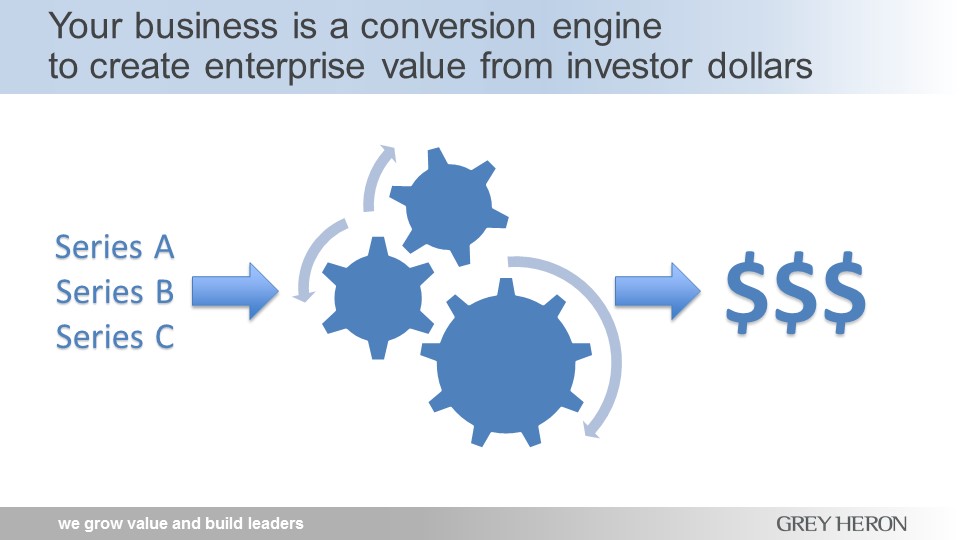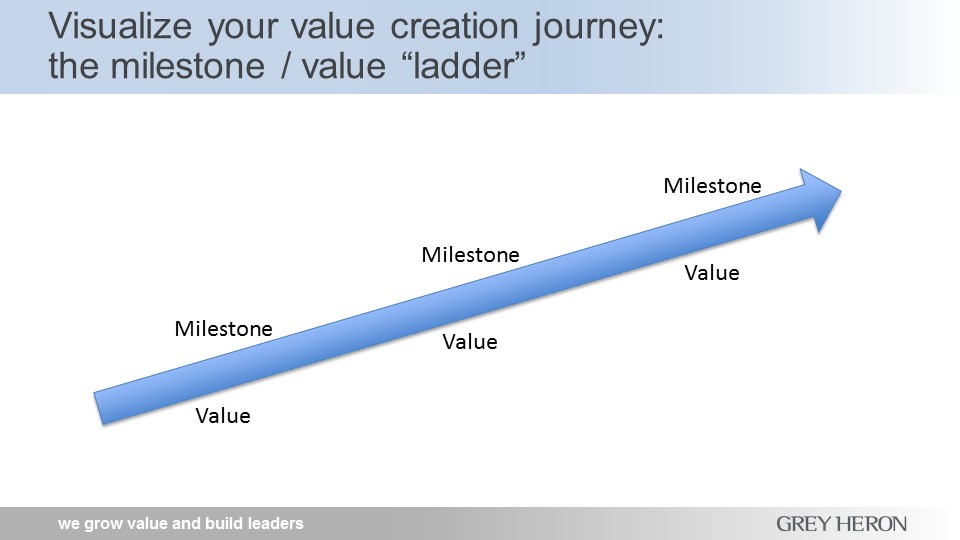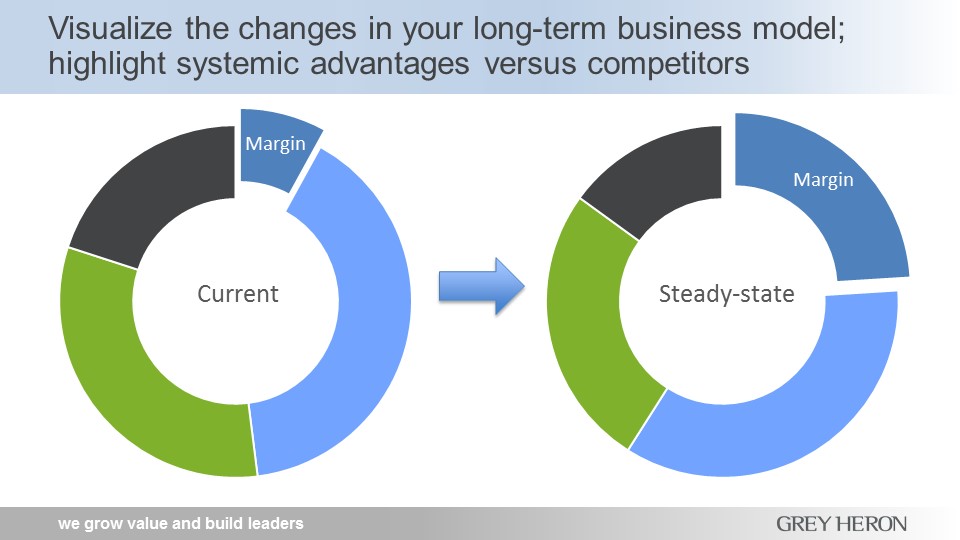Have you ever read articles with fund-raising advice? They have titles like “how to create an elevator pitch” or “the ten slides you need” and can be very useful. In this article, though, I’m going to take it up a level from those “details.” I’ll share how to reframe your thinking and your pitch to speak directly to one of an investor’s key concerns – how you’ll create value.
Dollars in, value out
At the end of the day, your technology and business is a conversion engine. That engine eats investor dollars and needs to create enterprise value. Period.

Entrepreneurs love strategy, vision and technology. That’s why many of us became entrepreneurs and focused on high tech.
But the thing to remember is that all of your technology is a means to an end – the creation of enterprise value. Investors care about return on their investment. Speak to how you deliver that, and you’re speaking an investor’s language – as well as setting yourself ahead of competitors.
Josh Green, general partner at Mohr Davidow Ventures and former chairman of the National Venture Capital Association, has helped more than 150 companies through successful IPOs. His comments sum it up: “VCs typically invest in just a few companies each year after considering a thousand or more opportunities. Yes, we invest in great teams. Yes, we invest in great technologies. Yes, we invest in large, growing markets. But the more a company can show it can get from here to there, and demonstrate the value that it will create, the better its chances of closing on a good financing.”
Channel your inner CFO
I love the CFOs I work with. They bring a no-nonsense, solidly grounded discipline to business thinking, starting with basics like “cash is king.” Part of their value-add is taking emotions out of the picture. While the CEO and technologists are animated about changing the world, the CFO can add important balance, forcing honest answers to why a customer really needs this – and asking for proof. When you’re preparing to raise money it’s a good time to put on your CFO hat or have someone that thinks like a CFO help pressure-test your pitch.
Case in point: I’ve worked with interim CFOs multiple times. I asked Kenton Chow, a partner at FLG Partners (which offers “CFOs as a service”), about the best ways to change how a company talks about itself. “Simple. Start with the basics – what it takes to drive customer growth, how big, how many, how fast and when. Customer acquisition costs. Understand the drivers of your business model and profitability. Be realistic about costs and be prepared to back them up,” said Chow.
The currency of a CFO is metrics. Inputs, outputs, KPIs, sensitivity. Learn how to talk about what an investment buys you.
A conversion engine mindset brings your business model to life
“We have a SaaS-like recurring revenue business model.” “We develop technology and license it to many customers that build plants, giving us a highly capital-efficient business model.” “Our long-term model is X percent of revenues to R&D, Y percent to sales and marketing and Z percent margin.”
What’s the difference between your business model and this conversion engine idea? Your business model feels static. A conversion engine makes it dynamic – brings it to life. A business model is definitional. It characterizes.
But an engine is a living thing. You can tune an engine. Increase its efficiency. Get out the gunk. Fix a problem. Turbo-charge it. Feed it premium fuel. Instrument it to see what’s going on. You feed it, nurture it, love it.
It’s about (fundable) milestones and de-risking
You build value by meeting market-relevant milestones. But a sequence of milestones is not just about features and timing. It’s inextricably linked to the dollars it takes to get there, the time it takes, a safety margin and the results stream created by each milestone (e.g., revenue, profits).

Think of each successive market-relevant milestone as a lily pad. You need to raise enough money to reliably get to the next one. You need to prove out your model at each stage. Each milestone should tangibly reduce investor risk and therefore correspond to an increase in enterprise value. If an investor thinks that your next planned jump is too big, then you have a problem.
Use your conversion engine model to highlight your sustainable competitive advantage
Understanding how your business really works to convert investments into value allows you to – yes, you guessed it – take snapshots in time that describe your business model. A good way to do this is commonly used by public companies – showcasing pie charts with the target percentages of expenses and profits in both their current and target business models.

This also gives you a great opportunity to highlight your differentiation from others in your industry – and how it impacts your model. For example, if something about your technology allows you to access a consistently lower-cost set of outsourced manufacturing assets, here’s the place to highlight that.
Getting fund-raising right
There’s a lot you need to get right when you’re fund-raising. Much of the time, you’re already well-prepared to talk about your technology, your market and your competition. So spend a little more time focusing on how to talk the language of your potential investors – show them how your business will convert their dollars into significant enterprise value and deliver a great return for them.
Steve Weiss is co-founder of Grey Heron, a management and strategic marketing consulting firm. He has helped executives and investors at over 130 companies turn technology into substantive businesses in areas including the Internet of Things, cloud/SaaS software, energy and resource efficiency, cleantech and advanced materials. He has also held research, development and marketing/business development roles at Serious Energy, IBM, HP and startups. Contact Steve at weiss@greyheron.com; follow him on LinkedIn.
